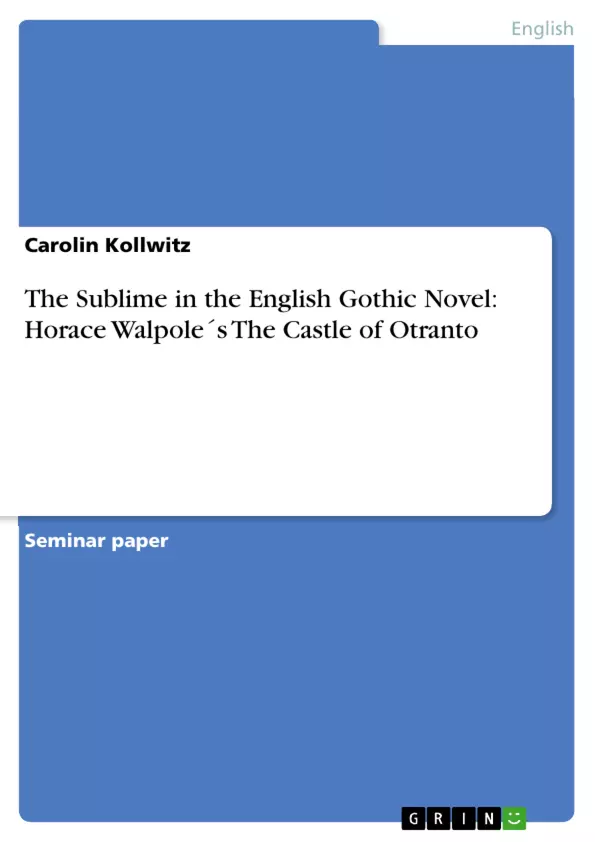In this paper I will examine the Gothic sublime by using the example of Horace Walpole´s novel The Castle of Otranto. I want to examine the features of the Gothic sublime: what was new and different about it? how is this reflected in the novel?; in order to prove the importance of Walpole´s work. It marks, in a certain aspect, a turning point in literature, since it is regarded the first Gothic novel. I will argue that the horror as developed in The Castle of Otranto is not simply based upon the appearance of ghosts and supernatural events, but rather a subtle kind of horror.
Firstly, an introduction into the Gothic novel in general, its characteristic features, and the examination of the cultural background of English Gothic fiction shall give a brief overview over the topic. Secondly, I will examine the means by which Walpole evokes fear in the reader, and the effects they had.
Table of Contents
- Introduction
- The Gothic Novel
- Background
- The Castle of Otranto- a short summary
- Gothic Sublimity
- The Sublime in The Castle of Otranto
- Repetition and Exaggeration
- Sexual Terror and Incest
- Conclusion
Objectives and Key Themes
This paper aims to examine the Gothic sublime through the lens of Horace Walpole's novel, *The Castle of Otranto*. It seeks to analyze the unique features of the Gothic sublime, exploring how they are reflected in the novel and establishing the significance of Walpole's work in literary history.
- The evolution of the Gothic novel as a genre and its roots in the cultural context of the 18th century.
- The role of the Gothic sublime in generating fear and its psychological effects on the reader.
- The ways in which Walpole uses literary devices like repetition and exaggeration to create a sense of the sublime.
- The exploration of themes like sexual terror and incest within the context of Gothic literature.
- The analysis of *The Castle of Otranto* as a foundational text in the development of the Gothic novel.
Chapter Summaries
- The first chapter introduces the topic of the Gothic sublime and positions *The Castle of Otranto* as a key example for its analysis.
- The second chapter provides a general overview of the Gothic novel, exploring its historical context and cultural origins in the 18th century. It examines the social and intellectual landscape of the era, highlighting the paradoxical rise of the Gothic genre during the Age of Enlightenment.
- The third chapter delves deeper into the specificities of *The Castle of Otranto* and explores the ways in which Walpole evokes fear in the reader. It examines the novel's themes, characters, and plot, focusing on how they contribute to the overall atmosphere of the sublime.
Keywords
This paper focuses on the Gothic sublime, 18th-century English literature, Horace Walpole, *The Castle of Otranto*, Gothic novel, Age of Enlightenment, cultural context, literary devices, repetition, exaggeration, sexual terror, incest, fear, and psychological effects.
- Citation du texte
- Carolin Kollwitz (Auteur), 2003, The Sublime in the English Gothic Novel: Horace Walpole´s The Castle of Otranto, Munich, GRIN Verlag, https://www.grin.com/document/13026



